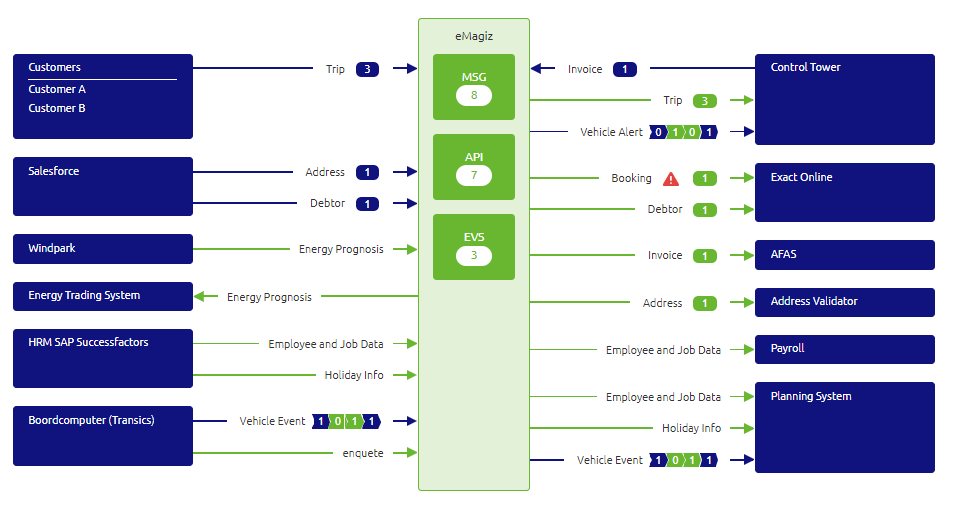In this fundamental, we will focus on describing the concept of architecture of eMagiz. The word architecture is generally well understood yet in every context has specific nuances. Here, the architecture is described so that this notion is better understood when reading the microlearnings or making configurations in eMagiz.
Should you have any questions, please get in touch with academy@emagiz.com.
1. Prerequisites
- Completed crash course training
2. Key concepts
TBA
3. Architecture in eMagiz
In this fundamental, we will zoom in on what data models are and how they are used within the various integration patterns we support in the platform. Then, we start our journey with a more theoretical look at the concept of data models. Following, we will zoom in on each of the three integration patterns. Finally, per integration pattern, we will explain the role of the data model within each of these three patterns.
3.1 Solution Architecture
In most phase, there is visualization present in the product that describes the integration landscape. In Capture, Design, Create and Deploy you will have this visual mostly, and each phase does display the integration landscape particular for that specific phase. So that the integration landscape is better understood in the context of the phase. We refer these views as solution views as it tries to describe how the data is flowing from system to system. Or what solution is used for the business process.
Below an example you can recognize as a screenshot of a Design phase. Such views are helpful in discussion with users and architectx involved in the integration work.

3.2 Cloud Architecture
For this we mean the specific way the eMagiz runtimes are distributed on infrastructure components such as the eMagiz Cloud, on-premises servers or other locations where runtime may exist. Please take a moment to check out the Fundamental on Cloud architecture via this link.
The Cloud architecture can be design in the Design - Architecture section, and effectuated via the Deply - Architecture section. Please check out
- SPEL Expressions
- SPEL Expressions
- SPEL Expressions
- SPEL Expressions
- SPEL Expressions
- SPEL Expressions
- SPEL Expressions
4. Key takeaways
- Data models define the structure of data related to a system or related to eMagiz itself
- Within a data model, you model out the relationships between entities
- Within a data model, you define all relevant attributes of an entity
- eMagiz uses data models in each of the patterns to structure the data (flow)
5. Suggested Additional Readings
If you are interested in this topic and want to learn how you can control your Cloud with the help of the eMagiz platform, please check out our microlearnings offering on eMagiz Cloud Management:
